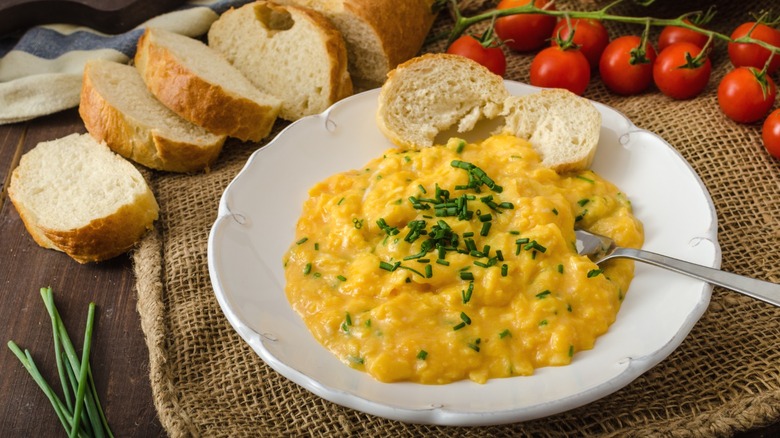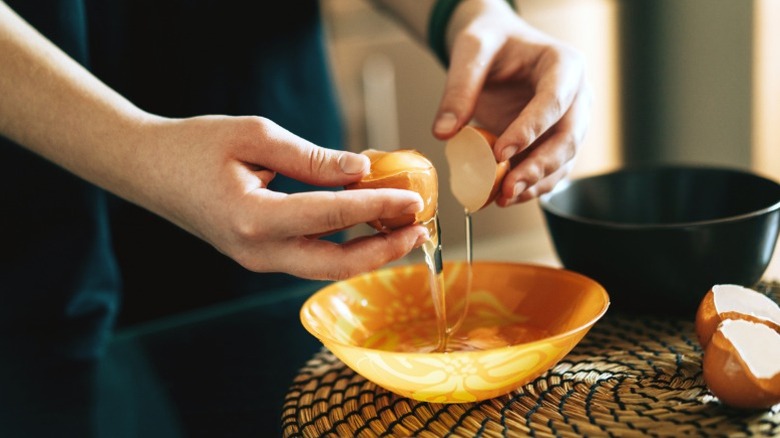Take One Bite Of French Scrambled Eggs And They'll Be Your New Go-To
We all know scrambled eggs. They're the old reliable option at continental breakfasts and brunch buffets all across America, with thick, fluffy curds all but begging to be drizzled with ketchup. They're dependable, they're relatively easy to make, and ... well, they're not terribly exciting, are they? They make for a solid breakfast burrito filler, but they're not going to set anybody's world on fire. What if you wanted to try something a little different with your scrambled eggs, something that has everything you like about American scrambled eggs but with an intriguing twist? Allow us to introduce you to French scrambled eggs, with a little help from Nelson Serrano-Bahri, Chef and Director of Innovation at the American Egg Board.
"American scrambled eggs are usually cooked quickly over medium to medium-high heat, stirred in larger curds, and often finished with butter, milk, or cheese for fluffiness," Serrano-Bahri said. "In contrast, French scrambled eggs are simmered over gentle heat and stirred constantly until they become creamy, custard-like, and almost sauce-like in texture. They're much more delicate, and the process is all about patience." It's been said that the true test of a chef's skill is not some complex creation of haute cuisine, but a simple omelet; maybe the same could be said for these scrambled eggs.
In any case, the end result is delicious: a rich, jammy egg dish you can eat on its own or spread on a piece of toast. You can season the eggs with "chives, tarragon, or parsley" to "add brightness," Serrano-Bahri said, or you can use a delicate soft cheese to finish them off without being too overpowering.
How to get silky, delicious French scrambled eggs
So, how do you properly scramble your eggs in the French manner? Nelson Serrano-Bahri offers further advice. "That signature soft, silky texture is all about slow, gentle cooking and constant movement," he said. American scrambled eggs, with their big, fluffy curds, encourage periods of inaction suitable for your dad making breakfast on a lazy Sunday morning. Not so with French scrambled eggs: "you stir with a spatula or whisk almost nonstop, breaking up any curds before they get large," Serrano-Bahri said. The result is a pan full of smooth, velvety goodness that demands to be gobbled up by the spoonful.
If you've never made French scrambled eggs before, they may catch you off guard, throwing your muscle memory all out of whack. Goodness knows it'll give your forearm a workout. But Serrano-Bahri once again advises patience. "The eggs will slowly thicken into a creamy, custard-like consistency. They're done when they just hold together but still look glossy and moist." Once ready, they'll be perfect for a nice, luxurious brunch: perhaps with some French toast (which wasn't actually invented in France at all), or some 2-ingredient mimosas. Either way, the chefs and servers who hate working brunch will thank you for making it at home.

